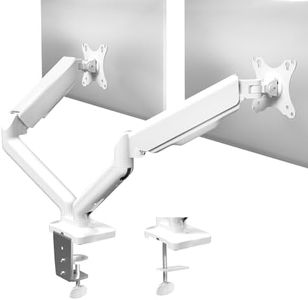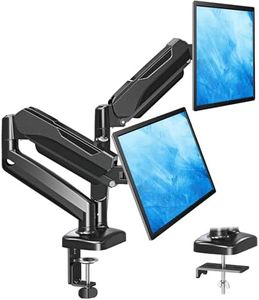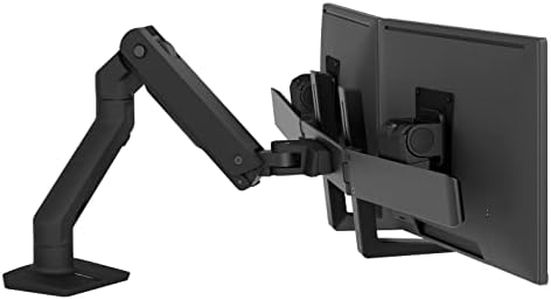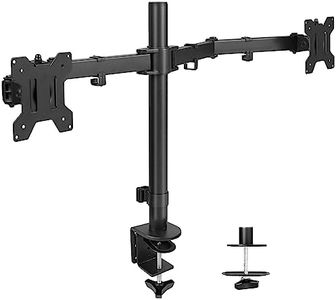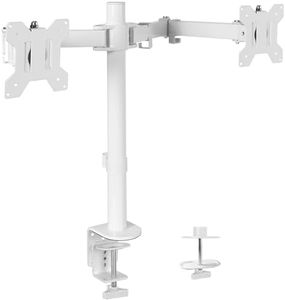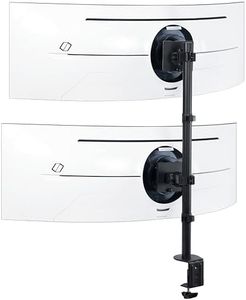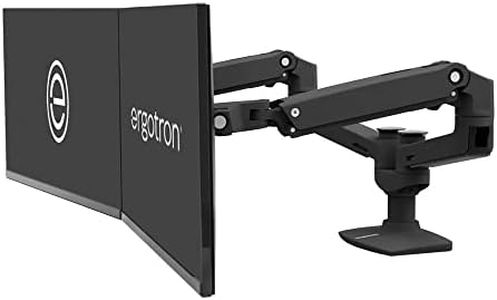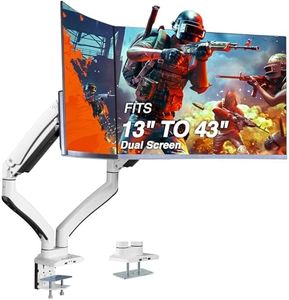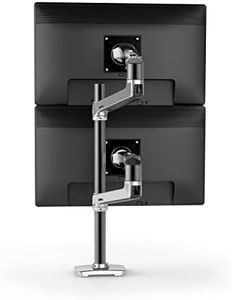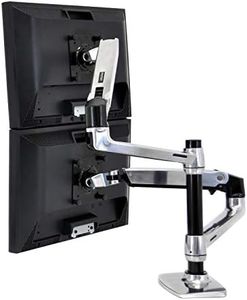We Use CookiesWe use cookies to enhance the security, performance,
functionality and for analytical and promotional activities. By continuing to browse this site you
are agreeing to our privacy policy
10 Best Dual Monitor Mounts
From leading brands and best sellers available on the web.Buying Guide for the Best Dual Monitor Mounts
When selecting a dual-monitor mount, it's important to choose one that not only fits your monitors, but also matches your workspace, ergonomic needs, and the ways you like to use your screens. The right mount can reduce neck and eye strain, free up desk space, improve posture, and make your workflow much more comfortable and efficient. Start by identifying the size and weight of your monitors, how much adjustability you want, and how you plan to install the mount (like clamping to a desk or drilling into a wall). Taking a careful look at your workspace, your daily habits, and your comfort can help you select the best option.Supported Monitor Size and WeightThis specification tells you the range of monitor sizes (measured in inches diagonally) and the maximum weight each arm can safely hold. It’s important to never exceed the maximum limits for both size and weight, as this can make the mount unstable or even cause damage. There are mounts rated for smaller, lighter screens (up to 24 inches and 10 lbs per arm), which can be ideal for compact workspaces or basic office monitors. Medium ranges (24-32 inches, up to 20 lbs per arm) accommodate most mainstream monitors and provide a good balance for both home and office setups. Heavy-duty mounts go beyond 32 inches or support ultrawide monitors and heavier screens. To pick the right one, check the back (or manual) of your monitors for their size and weight, and make sure both fit safely within the mount’s limits before buying.
VESA CompatibilityVESA is a standard for how monitors are attached to mounts, described in millimeters (like 75x75mm or 100x100mm). This ensures your monitor can be securely fastened to the mount arm. Most modern monitors follow VESA standards, but sizes may vary, especially on very small or very large models. To use a dual-monitor mount, your monitors should have matching VESA holes and the mount needs to support these patterns. Always double-check both before buying so there’s no compatibility issue.
Mounting MethodThe mounting method describes how the arms are attached to your workspace—most commonly with a desk clamp, grommet mount, or wall mount. Desk clamps attach to the edge of a desk with a screw-tightened clamp, requiring a sturdy and not overly thick desk edge. Grommet mounts use a hole (sometimes pre-existing, sometimes drilled) in the desk for an even sturdier hold. Wall mounts anchor your monitors to the wall, freeing up desk space but requiring wall drilling and strong hardware. Consider your desk’s material, location, and whether you’re allowed to drill before choosing the best method.
Adjustability and Range of MotionThis refers to how much you can move each monitor: tilt (up/down), swivel (side-to-side), rotate (portrait/landscape), and extend/retract (closer or farther). Some mounts offer basic adjustments (just height or tilt), while others allow full 360-degree rotation and a wide extension range. If you shift seating positions, share your screen with coworkers, or like to use your monitors in both landscape and portrait, look for a mount with greater flexibility. If you rarely move your screens, a simpler solution may be fine.
Cable ManagementCable management features help route and hide monitor cables along the mount arms to keep your desk neat and prevent tangled wires. Some mounts offer built-in channels or clips, while others leave cables exposed. If you value a tidy, professional look or want to prevent cables from catching or snagging as you adjust the arms, look for a mount with good cable routing solutions.
Ease of InstallationThis is about how simple and quick it is to set up the mount with your existing desk and monitors. Some mounts come mostly pre-assembled and need only basic tools, while others require more time, effort, or technical skill to set up. If you’re not handy or don’t want to spend a lot of time on installation, look for mounts that clearly advertise easy or tool-free assembly, with clear instructions and included hardware.


